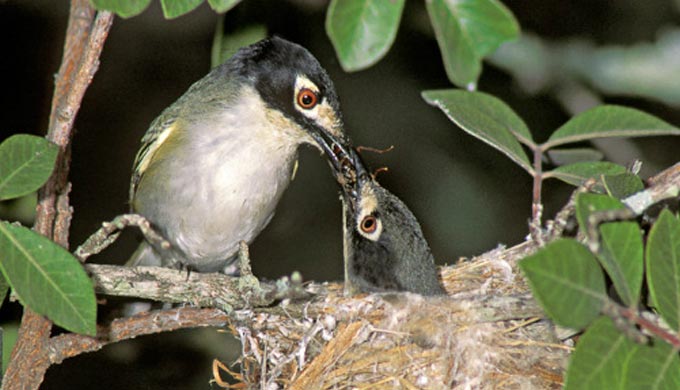By Marcy Stellfox
We all know that Austin gets big props for its music scene, foodie culture, and love of weirdness, but “flying” under the radar is the little known fact that Austin is an urban paradise for birders.


By Marcy Stellfox
We all know that Austin gets big props for its music scene, foodie culture, and love of weirdness, but “flying” under the radar is the little known fact that Austin is an urban paradise for birders.
1. Austin is a Bird “Super Highway”

Photo: Texas Parks & Wildlife
Austin is a birder’s utopia in large part because of its location. According to Texas Parks & Wildlife, Austin is encompassed (as is much of the Texas Hill Country) in a direct pathway of migration known as the “central flyway.” This migratory highway provides “well-defined, specific routes” for birds that breed and live in the northern latitudes (US and Canada) in the spring and summer, but migrate south to Central and South America for the winter. Known as neartic-neotropical migrants, Texas has recorded 333 of the 338 species of this bird group. In total, Texas has recorded 615 different species of birds, more than any other state. So armed with the right field guide and pair of binoculars, Austinites have the unique opportunity to spy on a myriad of these winged creatures.
2. Dillo Dirt…It’s Good for Birds Too!

Photo: A Scissor Tailed Flycatcher, provided by Marcy Stellfox
When looking for great birding destinations, probably not first on the list would be a visit to a bio solids recycling facility. However, Hornsby Bend Bird Observatory touted as the “best and most frequent birded site” by Texas Parks and Wildlife is just that. According to a 2010 article from the Austin American Statesman, historically, a dump for solid waste in the 1950s, the common thought of the day was that “nature would eventually break down the materials” pumped into the three lagoons there. The decomposition process actually left behind a great deal of sludge that surprisingly stewed into “a nutrient rich soup” with a crazy side effect. It attracted birds from all over. In fact, 600 plus different birds have been recorded here, like the Scissor Tailed Flycatcher viewed on a recent trip and pictured above.
Now, a Dillo Dirt (Austin’s locally made fertilizer) production facility and an environmental research center, the1200 acre property located in east Austin may tickle your nostrils with pungency, but is a birder’s dream. Waterfowl, shore birds and land birds can be seen here along with an interesting variety of dragonflies and butterflies. You may even see a few turtles sneak by. Monthly bird surveys and birding field trips are some of the regular events offered at Hornsby Bend. You can also hit the trail on your own daily by foot or by car from dawn ‘til dusk. For more information, check out: www.hornsbybend.org. For a complete listing of Austin birding locations, go to TPWD Austin Birding Sites.
3. Get to Know the Golden Cheeked Warbler & Black Capped Vireo

Photo: Golden Cheeked Warbler, US Fish & Wildlife Service
Unique to central Texas and the Hill Country is the Golden Cheeked Warbler, officially categorized as an endangered species in 1990. With its sunset yellow cheeks offset by a black and white body, this 4.5-inch little guy breeds only in a small area of central Texas, right smack dab in the middle of Austin. So much does this little warbler love Texas, that they do not raise their young anywhere else in the world! Arriving in March to set up house and breed, the Golden Cheeked Warbler is off to vacation in Mexico by mid-July. The best chance of viewing this little beauty is spring to mid-summer in and around the Barton Springs Nature Preserve and Barton Creek Greenbelt.
4. Black Capped Vireo

Photo: Black Capped Vireo, US Fish & Wildlife Service
Another bird on the endangered species list is the Black Capped Vireo. With its distinct blood orange eye, white eye band, and black capped head, the vireo nests in scrubby oaks and similar trees less than 15 feet high. Land clearing for livestock as well as urbanization of their natural habitat has led to their decline in recent years. According to the U.S. Fish & Wildlife Service, males arrive in Texas in mid-March to April to scout out and claim territory. Females fly in a little later, where they mate, and together build a nest. They lay their eggs in May, and the family hangs out in central Texas for most of the summer. Vireos then take flight in September and while the winter away in sunny Mexico.
If you are lucky enough to live in the Hill Country, birding is never really farther than your backyard. So grab a bird feeder, find a good pair of field glasses, and introduce yourself to some local birds by checking out this great beginners guide from Texas Parks & Wildlife: Texas Birds.